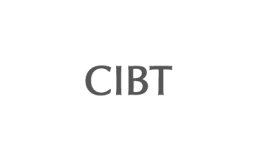Guarding The Nation’s Security
We enhance critical structures, to help secure the nation. We bring together proven strategies and technological advances, to stay ahead of our foes. The Department of Homeland Security (DHS) is a pivotal federal agency dedicated to safeguarding the United States from various threats and hazards. Established in the aftermath of 9/11, DHS brings together various federal functions to create a unified approach to national security. It encompasses protecting the nation from terrorism, securing the borders, managing immigration processes, responding to natural and man-made disasters, and ensuring the resilience of critical infrastructure.

DHS’s mission is to protect the people, homeland and values. Through proactive threat detection, rapid response, and strong collaboration, DHS strives to create a safe and secure environment for all.
Challenges
The Federal DHS faces several significant challenges, including improving operational efficiency., updating outdated IT systems and guarding against cybersecurity risks.
Counter-Terrorism and Homeland Security Threats
Struggling to effectively identify, assess, and respond to emerging domestic and international threats, leading to potential gaps in counter-terrorism measures that could compromise national security.
Secure U.S. Borders and Approaches
Facing difficulties in enhancing border security protocols while also managing immigration processes effectively, resulting in vulnerabilities that could be exploited and challenges in maintaining lawful and humane practices.

Preserve and Uphold the Nation’s Prosperity and Economic Security
Facing obstacles in maintaining economic uncertainties, jeopardizing national resilience and affecting citizen’s livelihoods.
Secure Cyberspace and Critical Infrastructure
Significant vulnerabilities exist in safeguarding critical infrastructure against sophisticated cyber threats, which risks disrupting essential services and undermining national security.
Growth is often met with resistance in the form of hurdles from cultural to financial, and organizational barriers.
Organizational Barriers
Fragmented Operations Structures: Different DHS components (Federal Emergency Management Agency (FEMA), Transportation Security Administration (TSA), Customs and Border Protection (CBP), etc. often work in isolation, limiting collaboration and information sharing which hampers efficiency and coordinated responses.
Financial Barriers
Grant Management: There are hurdles in effectively administering grants while ensuring compliance, particularly when factoring in infrastructure costs.
Technological Barriers
Data Security, Compliance, and Resource Constraints: There are considerable obstacles in safeguarding sensitive data, complying with stringent regulations, and managing resource limitations, all of which hinder the adoption and implementation of new technologies.
Operational Barriers
Resource Constraints: Bureaucratic inefficiencies due to lengthy approval processes and complex regulations, impede decision-making and delay project implementation.
Cultural Barriers
Innovation Hindrances: A risk-averse focus on compliance stifles innovation, while differing priorities and communication styles among agencies hinder effective collaboration and response to evolving threats.
Desired Outcomes
Through new technology, the DHS will enhance threat detection accuracy by 30% and reduce response times, thus providing a more cohesive approach to national security.
Revolutionized Immigration Processing through Automation
The adoption of AI-powered automation tools by USCIS will transform the immigration process, significantly reducing processing times and enhancing transparency in decision-making.
Enhanced Border Control through Real-Time Data Integration
Implementing secure, scalable data-sharing platforms enables real-time coordination among security, immigration, and intelligence agencies. This integration will bolster situational awareness, expedite incident response, and optimize border protection operations, ensuring a more secure and efficient border environment.
Strengthening Cybersecurity through Blockchain Technology
The incorporation of blockchain technology enhances the Dept of Homeland Security’s (DHS) data integrity, transparency, and security. By providing secure transactions and immutable records, the technology will mitigate the risks of data tampering and significantly improve the reliability of data management systems.
Optimized Resource Allocation through Predictive Analytics
Implementing predictive analytics tools will enable DHS to anticipate resource needs and allocate them more effectively. This proactive approach will enhance operational readiness, streamline resource deployment during emergencies, and ultimately improve response times in critical situations.
Improved Community Engagement through Enhanced Communication Channels
Developing advanced communication platforms will facilitate real-time engagement between DHS and communities. By fostering open dialogue and providing timely information, these channels will empower communities, enhance public trust, and ensure a more collaborative approach to safety and security.
Increased Operational Resilience through Comprehensive Training Programs
Establishing comprehensive training programs focused on merging threats and new technologies will enhance the skillsets and foster a culture of adaptability.
Success Stories
We help our customers success with real-life ventures.
12/03/2024Federal,Digital Strategy & Experience,DHSWorkforce
Transforming Federal Operations with Digital Innovation
A prominent U.S. federal agency, tasked with managing critical national programs, sought to elevate its operational efficiency and effectiveness through a strategic digital transformation.
Enablers
Our enablers fuel your customer loyalty and product growth.

Digital Strategy and Experience
Discover improved customer experience, productivity, and ROI.

Cloud Transformation
Scalable, secure, and agile cloud infrastructure is taking the industry by storm.

Analytics, Data Science and AI
Envisage a steady stream of insights through transparent, accessible data.
Insights
Read about our thought leadership, the latest technological trends, and tips.
World Class Customers
We have a variety of global partners we work with to help them achieve digital transformation.





























